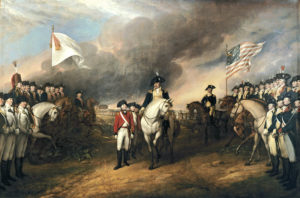
Capitulation comes from the military term for “surrender.”
Capitulation occur when investors rapidly sell equities, getting out of the market as quickly as possible and giving up any previous gains in stock prices. The term comes from the military word for surrender, and is closely associated with panic selling. Capitulation is characterized by high trading volume and sharp declines in price, usually a market decline of at least 10% in one day. Capitulation is usually motivated by the fear that stocks prices will continue to go lower. The most famous example of capitulation occurred leading up to the stock market crash of 1929 that caused the Great Depression.
Capitulations can be difficult to forecast, and are often declared after the fact. Wild swings in volatility and sharp price declines may mean a capitulation is coming. On a candlestick chart, capitulations are marked by hammer candles that form at the end of a spat of selling when the lowest price is reached.

Recent Comments